The Ambassador & The King
from Essays
Remarks in honor of Ambassador Jeffrey Bleich
The Fulbright Gala
Canberra, Australia
Thursday, August 22, 2013
I want to close our gala tonight with a tribute to a great American diplomat. He came here to Australia in 2009 and is returning to the States in just two weeks. I know all of you will be sad to see him leave.
I’m talking, of course, about Elvis Presley.
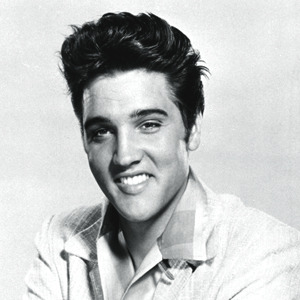
There have been many tributes to Ambassador Bleich and I understand there will be several more. In fact, our beloved Ambassador pretty much embodies that old joke about the difference between the Americans and the French. When they come to visit, the French leave and don’t say goodbye. The Americans say goodbye and never leave.
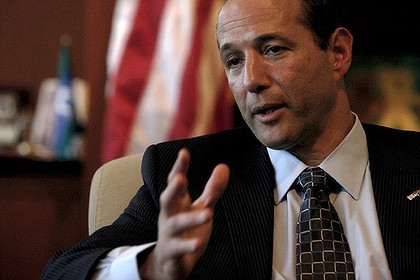
Now it turns out that the real Elvis Presley, who died 36 years ago this week, never made it to Oz. He did serve in the U.S. Army in Germany exactly 50 years before Jeffrey Bleich was named Ambassador by his good friend, President Barack Obama, in 2009. We’ll let it slide that Elvis’s own presidential friend was named Richard Nixon.
Now why is it that Elvis’s diplomatic journey to Australia happens to coincide exactly with the dates of Jeff Bleich? Well did you know that Elvis’s birthday – January 8th – is Jeffrey Bleich Day in San Francisco? And perhaps you did not know that you are in the presence of one of the greatest Elvis fans of all time.
Ambassador Bleich is not only deeply knowledgeable about Elvis Presley’s life and music, he is an avid collector of Elvis memorabilia with everything from signed records and guitars, Elvis bookends, pillows, a footstool, a lunchbox, a framed black-and-white photo of the King’s wedding and a bottle of Love Me Tender shampoo. Though he owns a life-size cut-out of the King, I can neither confirm nor deny that there is a sequined Elvis costume hanging in his office closet that he wears while talking on the phone to President Obama.
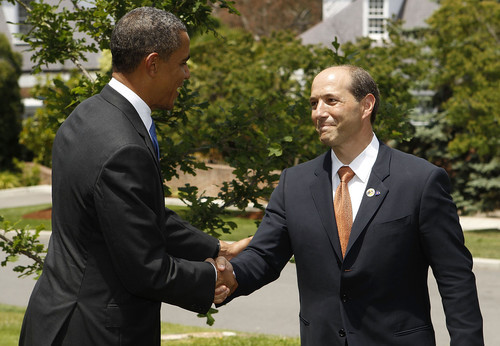
Like diplomatic service, Ambassador Bleich has described his interest in all things Elvis as “a calling.” Since we’ve been talking diplomacy the last two days, I’ll avoid just calling it weird.
Certainly Ambassador Bleich has been as popular as a rock star here. He and his wife Becky have served the United States with extraordinary intelligence, skill, generosity, and grace. To substitute some names I’ll quote what Ed Sullivan famously said the third time Elvis appeared on his show, “I wanted to say to Jeff Bleich and the country that this is a real decent, fine boy.” 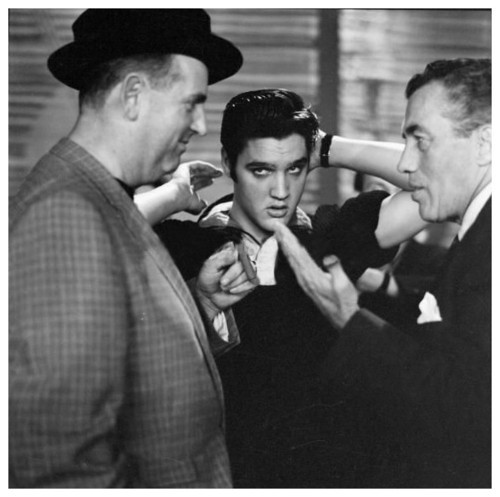
Not quite what we might say about Elvis’ granddaughter, Riley Keough, who it turns out strips down to her lace undies to pose as the spokeswoman for the Australian underwear line Bonds.
Thank you, Mr. Ambassador for your great strides to strengthen Australian-American relations.
But I digress. Back to Elvis himself.
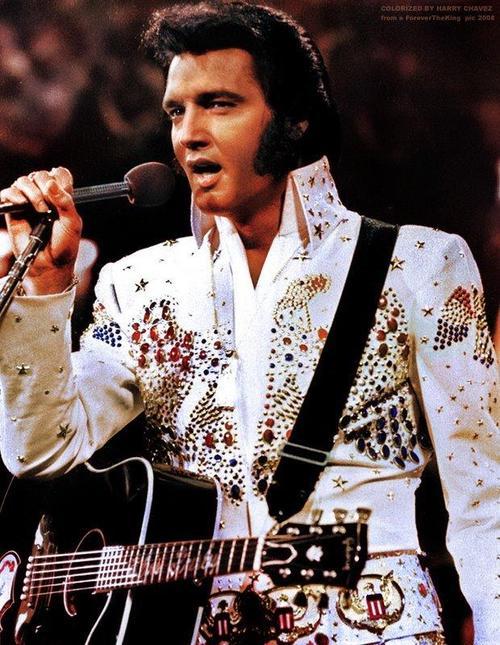
The most we know about Elvis’s actual diplomatic skills outside Memphis and Las Vegas were his brief Army years in postwar Germany and his week’s leave in Paris in 1960 with some of his buddies. In Paris, he seems to have had held several seminars on American values in his hotel room with the entire chorus line of dancers from The 4 O’clock Club. And then there were those three concerts in Canada.
But talk about power. Elvis said, “Ambition is a dream with a V8 engine.” And though he didn’t, his V8 actually did make it to Australia. 45 years ago, in 1968, RCA promoters brought the King’s1960 Series 75 Fleetwood Limousine to Oz on a promotional tour raising money for charity while scoping out the possibility of an Elvis tour.
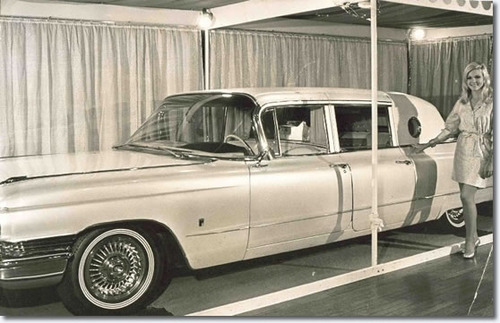
Sadly, the tour never happened, but people mobbed the car to see its sleek exterior painted with pearl and diamond dust and oriental fish scales. The hubcaps, wheel covers, headlight rims and front grille were plated in 24kt gold. Gold lamé drapes were used to cover the back windows and to separate the front and back seats. And the limo was outfitted with a gold plated phone, shoe buffer, refrigerator, RCA automatic ten-sleeve record player, swivel-TV and tape deck. A little different from Ambassador Bleich’s standard issue General Motors SUV that’s used around the world by American diplomats.
A huge sum was raised for charity in 50 stops—more than 17,000 miles through every state and territory except the Northern Territory—from Rockhampton in northern Queensland to Hobart, Tasmania and Perth .
I’m not sure if Ambassdor Bleich has the 58-page collector’s item of Elvis Presley’s GOLD Cadillac Tour of AUSTRALASIA 1968-69. With rare archival photos and press clippings the booklet is an important record of a little known art of Elvis history.
There’s another fascinating piece of Elvis memorabilia in the State Department archives in Washington.
In large part because of Elvis, rock ‘n roll music thrived in the United States but got almost no play in Stalinist Soviet Union. People were so desperate to get records of new American music that they came up with ingenious ways to smuggle it in. One way was to press the soundtrack from a record onto discarded x-ray film. The State Department has a Soviet x-ray of human ribs with a recording of Elvis Presley singing “I’ve Got a Lot of Living to Do.” Millions of similar records were sold on the black market for a ruble or two. Each would play for a few months before wearing out. Because X-rays were used, this way of getting music into Russia was called “recording on the bones.”
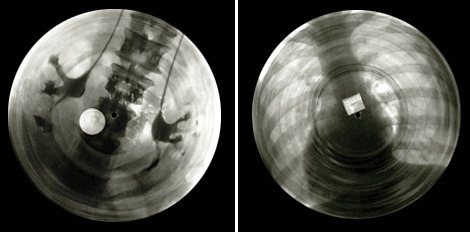
I was thinking about this earlier this week when I drove out from Melbourne into the beautiful Yarra Valley. It was one of those days where it’s difficult to do my job—forced to sit by a crackling fire at a vineyard restaurant and have a four-course lunch and a flight of good wine followed by a tour with the curator of the Tarrawarra Museum, who was very patient with my midday indulgences.
The museum has a brilliant small show on right now with the not so inviting title “Animate/Inanimate.” But the works are very compelling. There is an extraordinary video work by two American artists, Jennifer Allora and Guillermo Calzadilla.

In the video, which fills the wall of a dark room in the museum, a musician is standing holding a small white flute. The background blocked out of the video, so she seems to be hovering in the blackness. And right next to her, a huge majestic Griffon vulture is perched on a stool. The vulture looks almost as large as the musician.
It turns out that the flute the woman is holding is 35,000 years old, found just a few years ago in a cave in southern Germany. It is possibly the earliest musical instrument ever found. The last ice age was waning 35,000 years ago and thick glaciers still covered half of Europe and North America. Neanderthals had not yet died out. All the archeological evidence points to a time of intense day-to-day struggle for survival for these early homo sapiens.
But what’s so moving, so extraordinary about our species, about the history of the human heart and mind is that this tiny flute is evidence that these early humans were doing more than just trying to survive in the ice and bitter cold: they were making music. What’s more, three small-sculpted figures were found in the cave: a horse head, an aquatic bird, and a lion-man. These are three of the earliest known works of art. They are clues to the rapid development of human consciousness, to yearnings and spiritual needs for meaning and happiness greater than safety and a full stomach. These creative abilities show that Homo sapiens had become self-aware – both part of the world, but apart from it – surviving in it and responding to it. And miraculously – just as Elvis communicated to young Russians behind the Iron Curtain through recordings on the bone, these early humans could communicate to us through the possibilities of music, a language that we can still understand today. As Henry Wadsworth Longfellow wrote, “Music is the universal language of mankind.” I’m not so sure he would have been an Elvis fan.
Of course, we don’t know what the music was from 35,000 years ago sounded like. What was so beautiful in the video work was the German musician was trying all kinds of techniques with her fingers and breath to make the flute take flight in song, while the vulture stretched its wings, cocked its head, sometimes seeming to listen, sometimes acting quite bored—as anyone tends to get when a video art piece goes on too long.
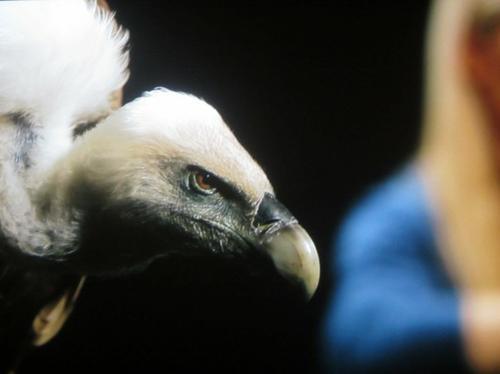
But the story gets stranger—in just the way music gets deep into our bones. It turns out that this 35,000 year old flute the musician was trying to play was actually made from the bone of a Griffon vulture 35,000 years ago. The scene had an uncanny quality as I watched the bird watching the musician playing a song on the bones of its ancient ancestor. And the musician, who was German and lived near the caves where the flute was found, was herself the descendant of the early humans who lived in that cave and played that flute thousands and thousands of years before her.
Then Elvis came into my head and the lyrics of Snowbird, which perhaps Ambassador Bleich could sing for us:
Beneath this snowy mantle cold and clean
The unborn grass lies waiting
for its coat to turn to green
The snowbird sings a song he always sings
And speaks to me of flowers
that will bloom again in spring
The snowbird in the video seems to listen to the sound of the flute. What does it hear? There was something both profound and shocking about the scene and the ideas behind it. Imagine listening to a flute made from the bone of one of your relatives.
And what was Elvis doing here? What was I doing? I looked up the expression culture vulture and it turns out it was coined in 1947, the first year people went out across the globe on their Fulbright scholarships!
How far can I spin this? In 1947, Elvis Presley was 12 years old, living at 1010 Green Street in Tupelo, Mississippi and attending the seventh grade at Milam Junior High School. This was the first time Elvis ever sang in public. A hillbilly singer named Mississippi Slim put him on the bill in a dance hall. Elvis had such stage fright he couldn’t go on. He had to try again the following week.
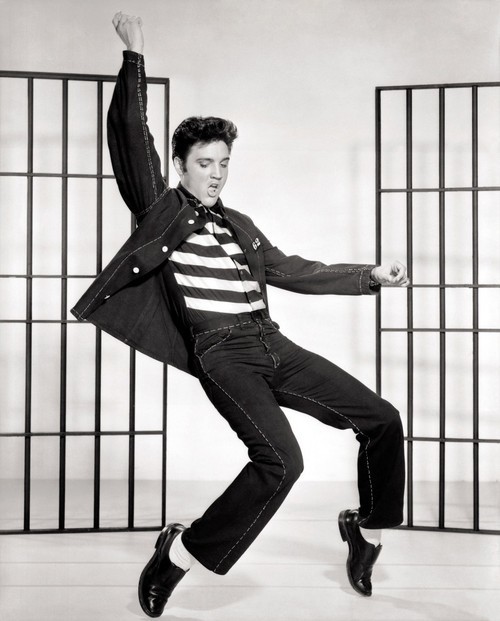
For the next 30 years, he never looked back. But then it ended. Elvis Presley died this very week – on August 16th, 1977. Ambassador Bleich was 16. He was probably getting his first V8. I like to imagine Elvis on 8-track, the windows down saying what Elvis said that summer on his last tour:
“‘Til we meet again, may God bless you. Adios.”